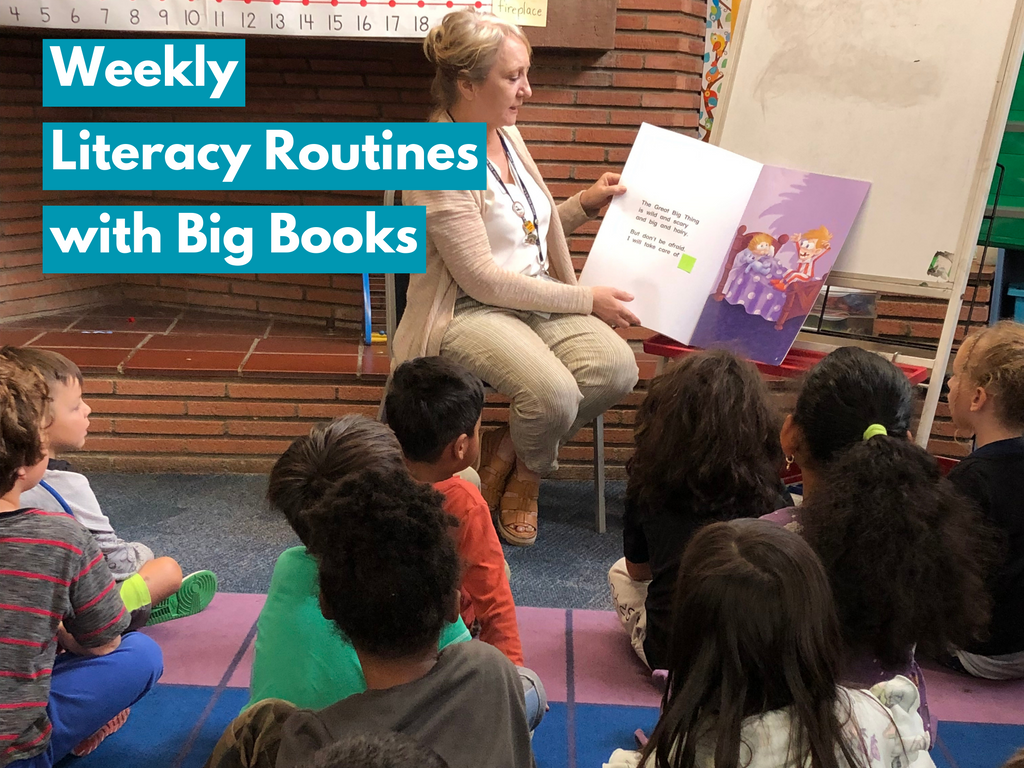By Margaret Tsubakiyama
Big books are magic. They recreate the lap reading experience you hope every child has at home, but your whole class can enjoy the book because of its size. I use them daily in my classroom–they are one of my most powerful teaching tools.
Choosing a Big Book
A first-rate big book should have a manageable amount of predictable text with pictures to support the words. Nonfiction books with full-color photographs and exciting topics draw students in. Hameray’s Big Book Collection features a variety of fun-filled fiction and intriguing nonfiction for shared reading in your classroom.
How I Use Big Books for Shared Reading
I like to read the same big book every day for a week. Rereading allows children to practice skills; it scaffolds them to where they can almost read the book themselves. Before reading, I build prior knowledge and talk about experiences related to the book. I make it a point to use the words title, author, and illustrator. We do a picture walk and make predictions. My students love it when I record their predictions on chart paper and put their initials by their predictions; they always want to see if they are correct.
The first time I read the book, it is purely for enjoyment. On subsequent readings, the children chime in or echo read. With each rereading, they do more of the reading, following along as I point to the words.
Big books build comprehension skills in early readers. Many A–D level books that beginning readers can read independently have little opportunity to practice comprehension skills. Shared reading of big books is when I can build this skill in my pre-readers and early readers.
I ask who/what/when/where/why, beginning/middle/end, and character/setting questions for fiction. I make a word web for nonfiction big books to help my students connect information and ideas. We also study words (long words, short words, high-frequency words, rhyming words, etc.); the size of the books invites children to examine letters, words, and punctuation. Finally, we act out the story or do a related drawing and writing activity. I get a week of multilevel reading lessons from one quality big book!
Big Book Centers
The Big Book Center is one of the most popular centers in my classroom. It is easy to set up and can last all year long. I have a variety of fun pointers, reading windows, and magnifying glasses for the children to use as they reread the story on their own. After a week of reading the book together, all of them can make an approximation of reading it. They are gaining confidence and learning that reading is fun.
Try big books in your classroom. Your students will love them, and you will love their blossoming reading skills.
~~~
Hameray's Big Book Collection is ideal for your shared reading and read-aloud library. It features 178 big books, including Mrs. Wishy-Washy titles, fables, and nonfiction covering a variety of topics. Most big books pair with smaller leveled readers to help students follow along. Guided reading levels A–M. Click here for big books in Spanish!
~~~
















